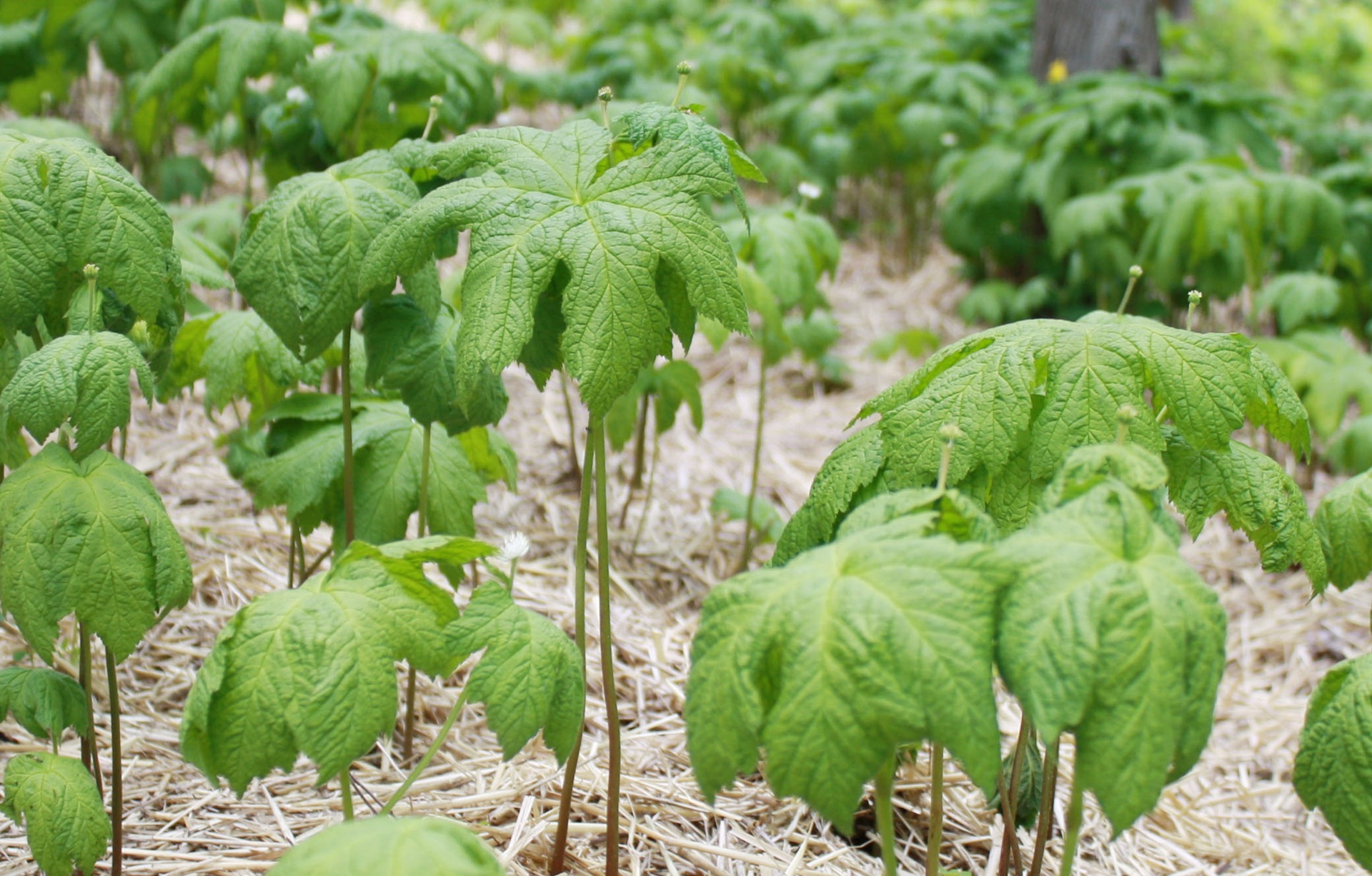Goldenseal is well-known by First Nations and has been used by North Americans for many centuries. It is a powerful antiseptic herb, due to its high berberine content which also gives it its yellow colour and its bitter taste. It is used on wounds that may get infected and is taken at the first sign of an infectious illness. It is very effective and does not destabilise the intestinal flora. It stains a bit, but that’s a small price to pay.
Unfortunately, its great benefits have played against it and it is becoming harder and harder to obtain. Already, at the end of the 19th century, the American eclectic doctors noticed that the plant was becoming scarce. This is no surprise because it grows on the forest floor, slowly (it takes at least five years to obtain a mature root), its environment is under threat by urban sprawl and huge American colonies of goldenseal were decimated by savage harvesting. Goldenseal is now on the CITES list (Convention on International Trade in Endangered Species) and only cultivated goldenseal should be consumed, preferably organically-grown.

Its Latin name, Hydrastis canadensis, is misleading as it is not a typically Canadian plant. Its indigenous territory is the American north-east. It can be cultivated in Quebec but few undertake that venture; it requires growing conditions similar to those of ginseng and the challenges to grow it are just as big. At Clef des Champs, we have dedicated a parcel of our forest to the cultivation of goldenseal in a wooded environment.
We have prepared a half-hectare parcel of forest (about 1 and a quarter acres) to receive a goldenseal plantation. In the fall of 2019, we chose a small incline (good drainage is essential to prevent the roots from rotting), we removed a few conifers to obtain just the right quantity of shade, we removed the stumps without disturbing the soil in order to preserve the bacterial life, and we let the area rest for a whole year. This fall, we weeded carefully, installed some drainage gutters, covered the soil with a thick mulch of leaves and wood chips. Then we planted 5800 young goldenseal plants!
Next year, we will pamper our young plants and watch carefully for any signs of fungal disease. In 2022, we will divide the biggest plants and propagate them in a new parcel which we have already started to prepare. After that, we will continue to divide the biggest and healthiest plants each year to ensure that we have enough 5-year plants every year thereafter. Cultivating goldenseal is a labour of love but we love putting forth so much effort to preserve this essential indigenous herb to make it available for all who need it.


